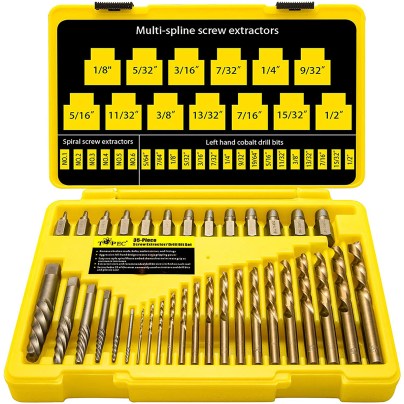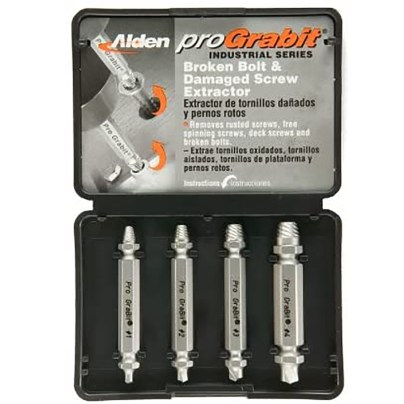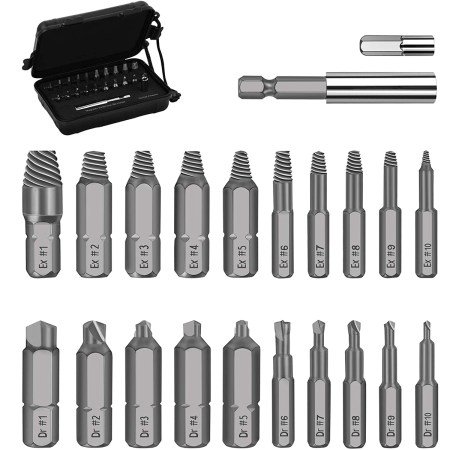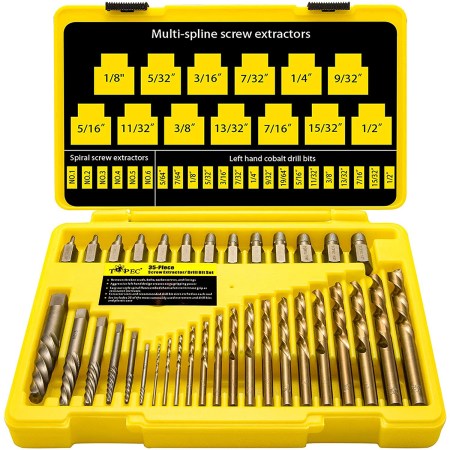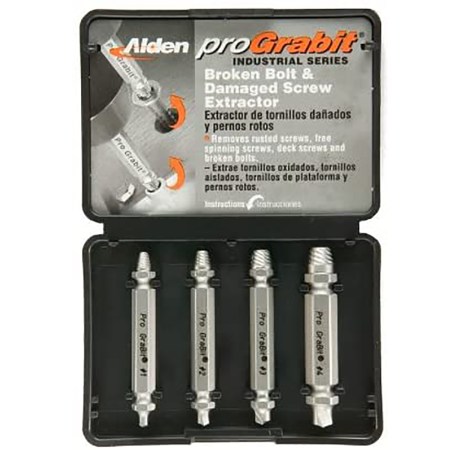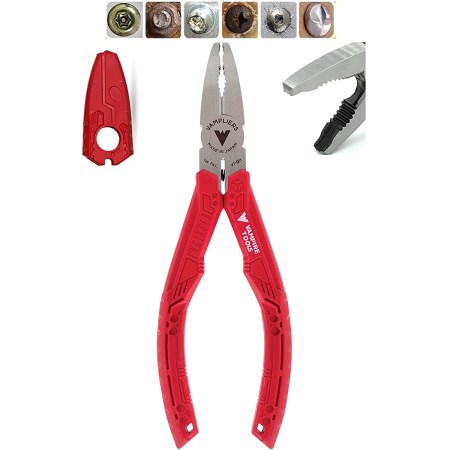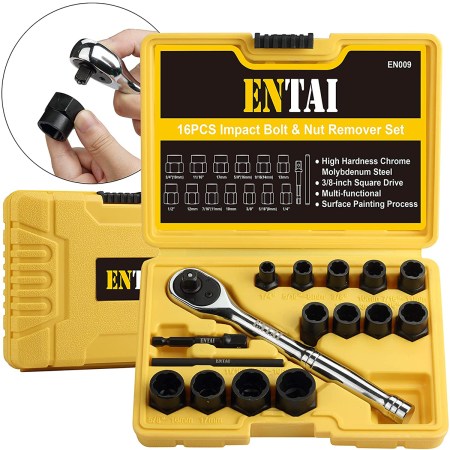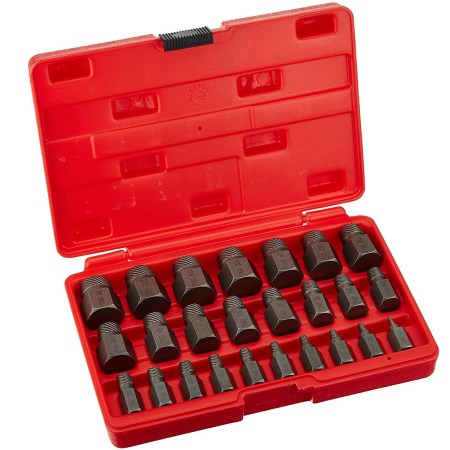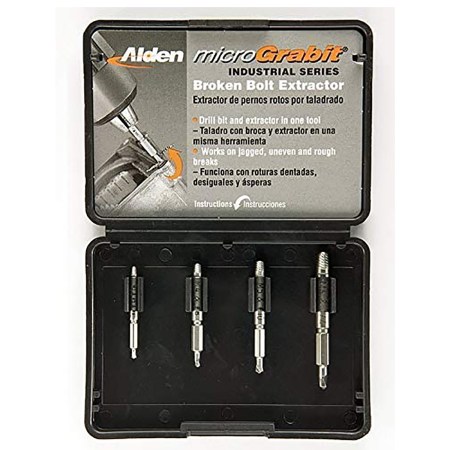We may earn revenue from the products available on this page and participate in affiliate programs. Learn More ›
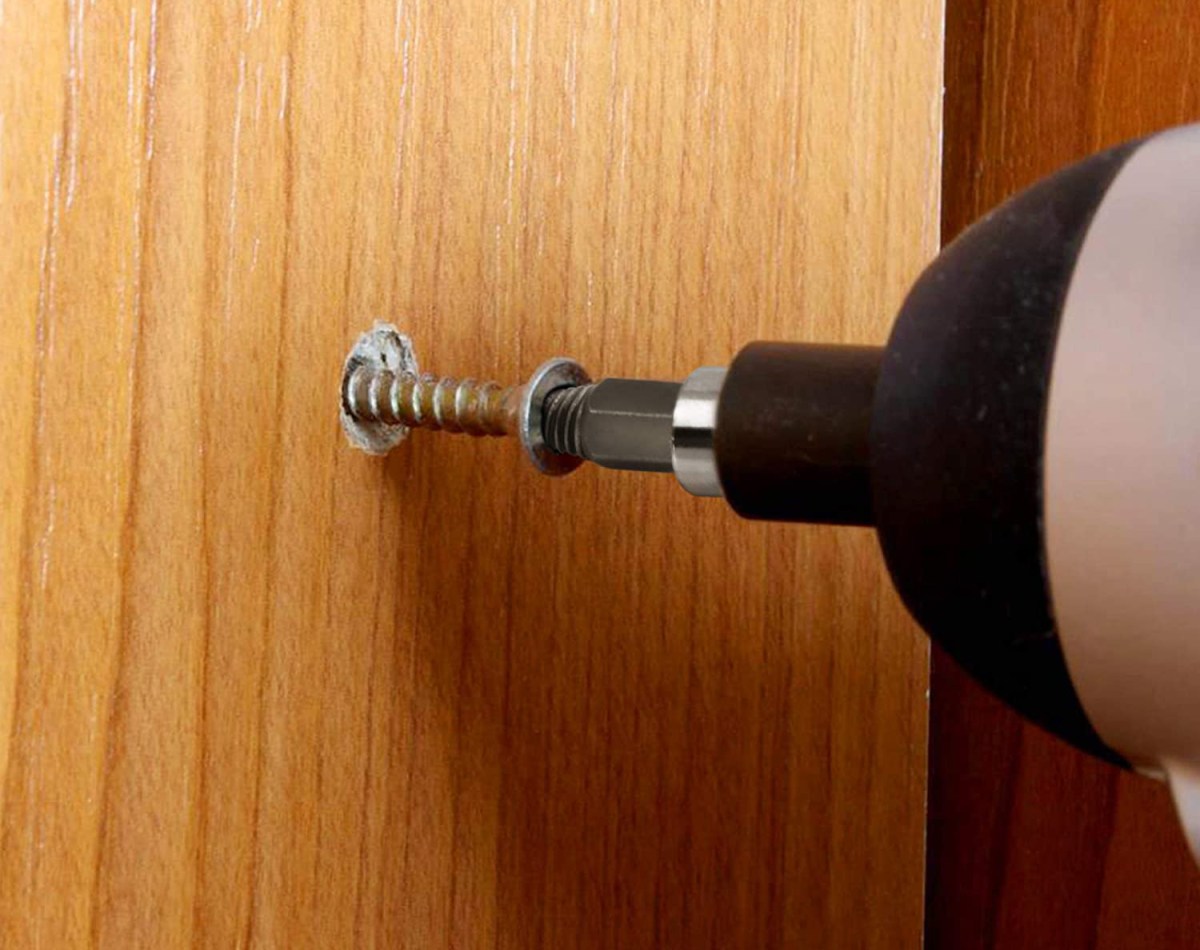
Few things can bring a building project or repair effort to a grinding halt like a stripped screw or bolt. This frustrating issue can leave one digging through their collection of tools in vain, searching for a way to remove the offending fastener. The good news is that there is a solution to this frustrating issue: a screw extractor. A good screw extractor can make quick work of damaged screws.
These handy devices consist of a drill bit that grinds a hole into the head of a screw and a threaded extractor that bites into this hole, gripping the screw so that the user can remove it with a drill or ratchet. There are many types and brands of screw extractors on the market, but few have the mettle to do the job properly.
This guide goes deep by identifying the important factors to consider when shopping for the best screw extractor while reviewing some of the top models on the market.
- BEST OVERALL: Werkzeug Damaged Screw Extractor Set
- RUNNER-UP: Topec 35-Piece Screw Extractor and Drill Bit Set
- BEST BANG FOR THE BUCK: Alden 8440P Grabit Pro Bolt and Screw Extractor Kit
- BEST EXTRACTOR PLIERS: VAMPLIERS, Screw Extraction Pliers
- BEST FOR BOLTS: ENTAI Damaged Stripped Bolt & Nut Extractor Set
- LARGE BOLTS & SCREWS PICK: Neiko Multi-Spline Screw and Bolt Extractor Set
- SMALL BOLTS & SCREWS PICK: Alden 4507P Grabit Micro Broken Bolt Extractor
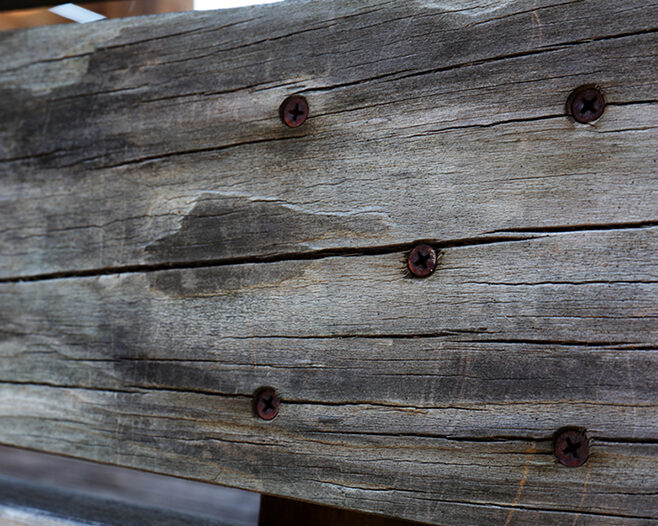
What to Consider When Choosing the Best Screw Extractor
Screw extractors come in different types to suit different damaged fasteners. Read on to learn more about each type and crucial factors, including gripping power and the material one should consider when choosing the best screw extractor.
Type
- Bolt extractor: A bolt extractor looks similar to a standard socket head except for the spiral threads inside it. These threads bite into the bolt head as the user turns the socket counterclockwise using a socket wrench. The threads typically have a spiral pattern that becomes tighter with force.
- Spiral screw extractor: A spiral screw extractor removes screws or bolts by fitting them into a hole that’s been drilled into the fastener’s head with a drill bit. The extractor has reverse threads that grip the screw as it rotates inside the hole counterclockwise. Many spiral screw extractor kits come with matching drill bits. Some are double-sided, with a drill bit on one side and an extractor on the other.
- Extraction pliers: Extraction pliers are a good option for damaged screws or bolts whose heads are protruding from the surface of the material. This set of specialty pliers has teeth designed to grip firmly onto the head, allowing the user to remove the screw by attaching the pliers and turning them counterclockwise.
- Stud and bolt extractor tool: This tool looks similar to the chuck of a power drill. Like extraction pliers, it only works with screws or bolts that are sticking out of the material. To use an extractor tool, place it over the head of the stud or bolt, then tighten the grip around it like a vice. Attach the end to a 0.375-inch or 0.500-inch ratchet and turn counterclockwise to remove the bolt or screw.
Supported Screw Size
Screw heads come in a wide variety of sizes, so it’s important to pay attention to what sizes the screw extractor can accommodate. Most sets include sizes ranging from 0.125 inches up to 0.625 inches. Larger sets have extractors as large as 0.875 inches and are capable of removing large bolts on vehicles and industrial machines. Other sets can remove tiny machine screws found in electronics, such as laptop computers with extractors as small as 0.0781 inches. While a small kit with four or five extractor sizes is adequate for most, it makes sense for pros or DIYers to invest in a set that can cover a broad range of sizes.
Gripping Power
Different types of screw extractors use different strategies for gripping a stripped or rusted screw or bolt head. Some drill into the head and use reverse threads to bite into and grip the head while others grab the head by fitting over it. While the latter generally creates more gripping power, this style of the extractor is limited to instances where the bolt or screw head is jutting out of the material enough to allow the tool to grip it.
The material type also affects gripping power. Drill bits and extractors made of high-quality steel alloys do a better job of boring into and gripping fasteners and last longer than those that use cheaper materials.
Material
Since screw extractors must burrow into metal screws in order to work, they need to consist of hard metal. Most screw extractors are made of high-speed steel, the same steel alloy used in many drill bits and saw blades. This type of steel is harder than other alloys and is capable of enduring high temperatures without softening, a key characteristic for drilling into the heads of metal fasteners.
If it’s in the budget, cobalt steel is even better, but it’s also pricier. It’s harder than high-speed steel and holds up better to the high temperatures created by metal cutting into metal. Cobalt steel also has a higher tensile strength, which makes it a better choice for extractors with a narrower flute of 0.125 inches or less. Stay away from extractors that consist of softer alloys, as they will not be hard enough to do the job.
Ease of Use and Versatility
Screw extractors have features that make them easier to use and ensure that the right drill bit is used with the right extractor. Those that work in conjunction with a drill bit must match the bit size to be effective. This type of extractor should have the compatible drill bit size etched onto its side to avoid confusion.
Double-sided extractors are some of the most convenient models as they feature the drill bit and extractor on a single reversible shank, eliminating the need to hunt for a compatible drill bit. Simply drill the hole with one side, then flip the shank to apply the extractor.
Some kits use magnetic extension bit holders that can hold either the drill or extractor bit. This allows the user to quickly swap between them, speeding the screw removal process along.
Since screw and bolt extractor kits can include 30 pieces or more, most come with handy carrying cases that keep all of the pieces organized so they can be found when needed.
Tips for Using a Screw Extractor
Most screw extractor tools are easy to use, even for beginners. Here are a few valuable tips for using a screw extractor.
- To use a screw extractor, begin by drilling a hole into the head of the damaged screw. Apply thread cutting oil to the drill bit prior to drilling. This will make it easier to drill through the metal by reducing friction.
- Before attempting to remove the damaged screw with the extractor, apply penetrating oil to the screw’s threads. Wait at least 15 minutes after application to allow the oil to make its way into the threads, then use the extractor. The oil should help to loosen the screw, making it easier to remove.
- If using a power drill to remove the screw, use a slow speed. This will maximize the drill’s torque and allow the extractor’s threads to grip the drilled-out hole in the head of the fastener. Using too high a speed can cause the extractor to slip in the hole.
Our Top Picks
The list below narrows the field to some of the top screw extractors on the market. This includes small sets designed for occasional use and large sets for pros and avid DIYers who regularly deal with damaged screws and bolts.
Best Overall
Werkzeug Damaged Screw Extractor Set
See ItThis simple set is well designed and versatile, making it a great companion for removing stripped screws and bolts. It includes a set of five drill bits with five matching extractors. Both bits and extractors fit into a handy magnetic bit holder, allowing the user to change each one out quickly while moving from drilling to extracting.
The drill bits range in size from 2.8 millimeters to 5.9 millimeters, each of which has a corresponding extractor that is slightly smaller to fit snugly inside the hole the bit makes. A universal chuck on the extender fits most power drills. Each bit consists of durable high-speed steel that can withstand high temperatures and repeated drilling into soft metals. A plastic carrying case keeps all of the bits and extenders organized.
Runner-up
Topec 35-Piece Screw Extractor and Drill Bit Set
See ItHaving the right size extractor is crucial to successfully remove a stripped screw or bolt. With 35 pieces that include left-hand bits and extractor sizes ranging from 0.125 inches to 0.250 inches, one would be hard-pressed to find a screw, stud, or bolt this extractor set won’t fit. It consists of high-speed steel that can endure the heat created when metal drills against metal.
With the included 16 drill bits and six different sizes of spiral screw extractors with reverse threading, this set is well equipped to take on stripped and sheared-off screws. Its 13 bolt extractors with sizes ranging from 0.125 inches to 0.500 inches can extract a wide range of fastener sizes. A handy carrying case keeps all the bits and extractors organized.
Best Bang for the Buck
Alden 8440P Grabit Pro Bolt and Screw Extractor Kit
See ItMost DIYers only need to contend with a damaged screw or bolt on an occasional basis, so it doesn’t make sense to invest a lot in a large kit. This kit from Alden is an excellent option for those who encounter a sheared-off bolt head or stripped screw from time to time. It features four extractor sizes for removing screws and bolts. Each bit is conveniently double-sided, allowing the user to drill into the bolt or screw, then flip the bit and remove it with the reverse threaded extractor.
The bits consist of high-speed steel that’s hard enough to easily cut through soft metal. A small carrying case keeps these bits organized, so they’re easy to find when needed.
Best Extractor Pliers
VAMPLIERS, Screw Extraction Pliers
See ItSometimes the best way to remove a stripped screw with an exposed head is to use a pair of pliers. While a standard pair of pliers might work, a better option is this pair of extraction pliers. These aptly named Vampliers have fang-like serrated teeth and a concave opening in the jaws that fit around the contours of a screw head.
What makes this set of extraction pliers so impressive is its ability to grip a wide variety of screw types. In addition to standard screw heads, this tool will also remove Torx, security screws, tamper-proof screws, and even single-sided screws. It also features ergonomic handles that allow for a comfortable grip for easier screw extraction and a handy case that protects the plier’s jaws when not in use.
Best for Bolts
ENTAI Damaged Stripped Bolt u0026 Nut Extractor Set
See ItBolts become very difficult to remove when the hexagonal-shaped heads are so worn and rounded that the socket slips around them. The spiral-shaped internal thread design of this nut and bolt extractor enables it to grip rounded bolts by becoming tighter the more force that is applied to it.
This set comes with a versatile collection of bolts that range in size from 0.250 inches to 0.625 inches, each of which conveniently includes both metric and imperial sizes that make it easy to quickly identify the right size for the damaged nut or bolt. In addition to the extractors, this set includes a 0.375-inch ratchet drive, a 0.500-inch adapter for smaller extractors, and a striking tool for removing bolts that become stuck in the extractors. A molded plastic carrying case keeps all pieces conveniently organized.
Large Bolts u0026 Screws Pick
Neiko Multi-Spline Screw and Bolt Extractor Set
See ItExtracting large stripped-out bolts and screws can be a tough job. With its large extractors, this set is up to the challenge. It boasts 25 extractors that run in 0.0312-inch increments from 0.125 inches all the way up to a hefty 0.875-inch extractor. Each extractor features micro-planed reverse threads designed to thread into drilled-out holes to remove stripped screws or bolts with rounded-off or sheared-off heads.
Its hexagonal head fits into standard sockets for optimal torque. Socket sizes are etched into the metal, making identifying each extractor easy. The extractors consist of chrome-molybdenum steel that is hard enough to extract these larger bolts. All 25 pieces fit into a molded carrying case.
Small Bolts u0026 Screws Pick
Alden 4507P Grabit Micro Broken Bolt Extractor
See ItRemoving tiny damaged screws from electronics such as laptop computers isn’t doable with a standard screw extraction kit. The bits are simply too large. With its ability to remove machine screws as small as a 1 rating, which is just 0.0781 inches in diameter, this kit is an excellent solution for extracting smaller stripped machine screws.
In addition to the 0.0781-inch size, it also includes 2, 3, and 4 machine screw sizes. Each bit is double-sided with a drill bit on one end and a threaded adapter on the other. They consist of durable high-speed steel that is heat-tempered twice for maximum hardness. A plastic carrying case conveniently keeps all four bits organized so they’re easy to find when needed.
FAQs About Screw Extractors
If you have additional questions about how to use a screw extractor, read on for answers to some common queries about these handy tools.
Q. What’s the use of the drill bit on the extractor?
The drill bit is a crucial part of the extractor that is used to bore a hole in the head of the damaged bolt or screw, creating a place for the extractor to penetrate and grip the screw head so you can remove it.
Q. What’s a screw extractor’s ideal length?
There really is no standard length for a screw extractor. In fact, short and long extractors work equally well at removing damaged screws and bolts. It’s more important to choose the correct diameter drill bit and extractor to suit the damaged fastener.
Q. How do I know which size extractor to use?
To determine the proper extractor size, begin by choosing the proper drill-bit size. The drill bit should be about half the diameter of the screw head. For example, to remove a 0.375-inch screw, begin by drilling a hole in the head with a 3/16-inch drill bit. Once the hole is drilled, use an extractor that’s slightly smaller than the drill bit—most kits conveniently match the bits on the kit to the extractor. The slightly smaller extractor should fit inside the hole but still be tight enough that its threads can lock into the hole’s contours.

